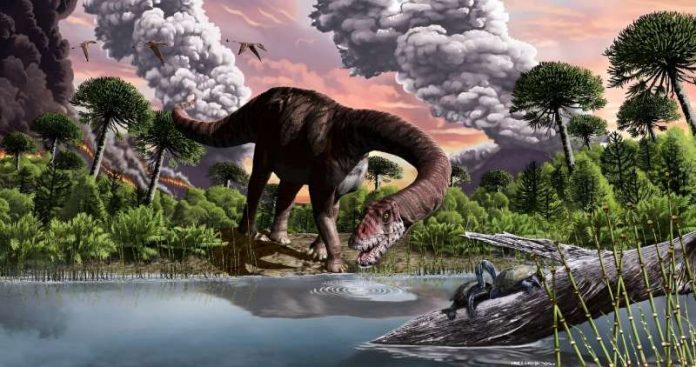A recent study reveals that a colossal asteroid, comparable in size to Mount Everest, struck a shallow sea near present-day Yucatan 66 million years ago. This impact ejected copious amounts of fine dust into the atmosphere, dust so fine that it remained suspended for several years. Some scientists propose that this fine dust might be the primary explanation for the rapid demise of the dinosaurs and around 75% of Earth’s other life forms.
The Chicxulub asteroid’s role in mass extinction has been a long-debated scientific topic. Earlier theories attributed the extinction event to a massive release of sulfur and soot from wildfires, causing a cataclysmic global winter and a drastic drop in temperatures, resulting in only 25% of life surviving. This new study, published recently in the journal “Nature Geoscience,” offers a fresh perspective.
According to the study, the asteroid impact produced fine silicate dust, pulverized into minuscule particles, capable of lingering in the atmosphere for 15 years. This dust darkened the sky for about two years, effectively halting the photosynthesis process. Consequently, plant life perished, leading to the starvation of herbivores and subsequently, the predators who relied on them, resulting in a catastrophic extinction event.
The fine silicate dust, along with sulfur and soot, led to a significant temperature drop of 15 degrees Celsius, as reported by the researchers. Lead study author and planetary scientist Cem Berk Senel, a postdoctoral researcher at the Royal Observatory of Belgium, explained that the nearly two-year disruption of photosynthesis posed severe challenges to life, collapsing the food web and setting off a chain reaction of extinction.
The study also proposes that those dinosaurs which evolved into birds, crocodilians, and small mammals survived due to their relatively smaller size and lower nutritional requirements, which enabled them to endure as plant life gradually recovered.















